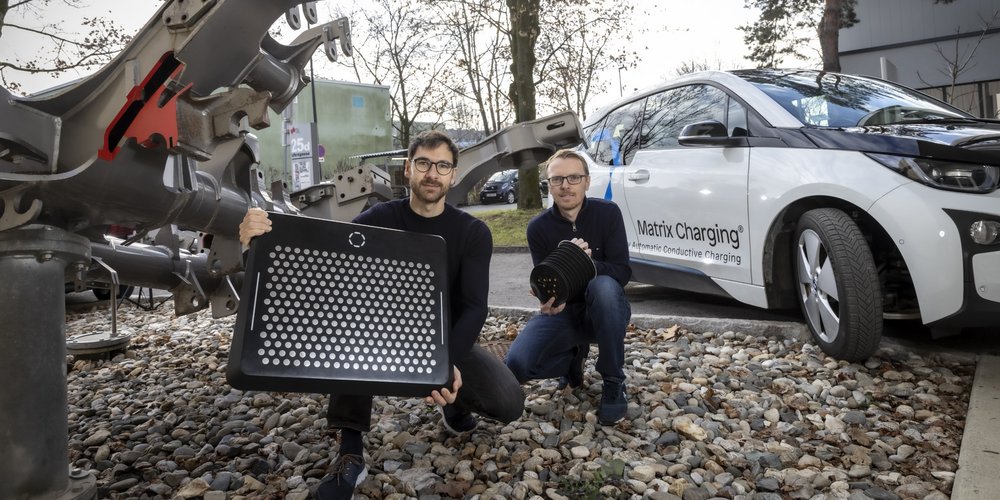An innovative solution for the range problem of electric cars and their increasing load on the power grid due to increased charging demand: the RailCharge project at Graz University of Technology (TU Graz), which is funded by the Austrian Research Promotion Agency (FFG), aims to address both these issues. The principle behind this is that in the future, electric cars will cover the majority of their journeys on the train and will be charged there via the railway’s own power network; the first and last mile can still be covered completely flexibly and individually with the battery fully charged by the train journey.
More efficient and environmentally friendly
This solution would have two advantages over the current development in e-mobility. Instead of installing ever-larger batteries to increase range, smaller batteries could be used instead, which would bring significant improvements both in terms of the pricing of the vehicles and with regard to the environment. If the power grid of the railway or even the braking energy of a train is used to charge the e-cars, this also relieves the strain on the public power grid, which can currently use every bit of relief due to the expansion of volatile energy sources. “And if you add one passenger or rolling and air resistance to each kilometre-ton, it is also much more efficient to travel by rail,” says Armin Buchroithner from the Institute of Electrical Measurement and Sensor Systems, who is leading the RailCharge project on the TU Graz side.
Together with the transport planning company verkehrplus, the project team is currently evaluating the different applications for which RailCharge really makes sense. But, due to the journey to the station as well as loading and unloading time with current possibilities, there is probably still little interest in replacing a 45-minute commuter route with a train which has a charging function. However, there should already be some potential for holiday trains, generally longer routes with a journey time of about three hours or more, or an industrial railway.
Newly developed solutions
In order to be able to actually implement the idea of RailCharge, some technical solutions have already been developed or at least designed. In cooperation with one of the project partners, the Graz-based start-up easelink, a charging solution has been developed in which a retrofittable freely moving connector on the underside of the car lowers itself onto a charging platform on the floor of the train carriage. This means that there is no stiff plug connection and also no cable and therefore no risk of damage to the vehicle due to the movements during a train journey – for example by scratching the paintwork.
The wagon design itself has also been rethought together with SSC Railtech, as it is not only charging technology that has to be accommodated since it is important to load and unload the vehicles as quickly, flexibly and automatically as possible. Tunnel travel at the targeted high speeds must also be taken into account. Without a closed wagon design, the cars could otherwise be damaged by the air pressure building up when entering a tunnel portal. And another partner is on board to contribute experience in the field of certification – the Rail Competence Certification GmbH RCC company.
Cross-border technology demonstration
The implementation of the developed concepts into reality is the next step of the RailCharge project. “What I personally have in mind would be a technology demonstrator in the form of a wagon travelling on a test track. Perhaps also a route with a border crossing. It would be nice to be able to demonstrate that this works for a journey from Vienna to Dresden or Leipzig, for example. Essentially, the aim is to show that it is possible to charge vehicles of different topologies on rail and they arrive fully charged,” says Armin Buchroithner.
Contact:
Armin BUCHROITHNER
Dipl.-Ing. Dr.techn.
TU Graz | Institute of Electrical Measurement and Sensor Systems
Phone: +43 316 873 30514
armin.buchroithner@tugraz.at
